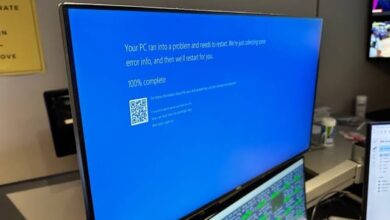LG Introduces Smart TV With Great Features, Stunning Design

When deciding on a new TV, price and screen size are likely to shape any shortlist you come up with. Nevertheless, within that seemingly simple filtering process are a whole raft of things to consider, such as panel display technology (how do UHD, QNEDMiniLED and OLED compare?), as well as smart platform, design and more.
4K Ultra HD resolution and HDR (High Dynamic Range) compatibility is now largely standard – unless you buy a bargain-bin TV special. While 4K is a logical step up from Full HD, HDR comes in various flavours. In addition to standard HDR10, there is HLG, Dolby Vision, HDR10+ and some other variations, like LG’s HDR Pro and Dolby Vision IQ.
Every aspect can represent a rabbit hole, but ultimately it is just a question of deciding which suits you best. Like key competitors, LG offers a huge variety of TV types, covering the budget, mid-range and premium ends of the market.
Not only is LG’s TV range class leading, it also has one of the most widely respected smart TV platforms on the market, in the shape of webOS. The latest iteration, dubbed webOS22 (the brand has moved from sequential numbering to yearly suffixes), delivers a huge variety of built-in streaming service apps, including Netflix, Prime Video, Apple TV+, and Now (subscriptions may be required).
There is also voice compatibility with Google Assistant, as well as the brand’s own ThinQ AI platform.
In this guide, we will steer you through the various 2022 models available from LG, where prices vary throwing a focus on their key features and attributes.
We will review category models – UHD, QNEDMiniLED TV and OLED TV with various sizes.
LG UHD – 43”- 86” (4K Ultra HD)
LG’s UQ range is a gateway to the finer things in life, like 4K UHD and multi-format HDR. These sets combine a solid picture performance with a range of highly desirable smart features. Screen sizes range from 43’’ for the UQ 7-series, up to a wall-filling 86-inch on the UQ 8- and 9-series.
The range-topping UQ91 is fashionably slim, thanks to LED edge lighting, and has a furniture friendly crescent stand. There are only three HDMIs on board though, which could limit your source options. Handling sound and vision is the brand’s Alpha 5 Gen 5 processor, with ThinQ AI. This silicon is particularly adept at upscaling. Smart Voice Control is available via Google Assistant. The screens are also compatible with Apple AirPlay.
The UQ range runs the latest iteration of webOS, which in addition to having a wide range of streaming apps on tap, also allow family members to set up different user profiles. HDR options here include LG’s own HDR Pro, which is a dynamic tone mapping technology for static HDR sources. The set also has Filmmaker mode, for movie fans who would rather turn off extraneous processing. Both of these continue up the range.
Gamers are catered for too. There is LG’s game dashboard and optimizer, plus HGiG HDR support. There is no High Frame Rate support for 4K 120fps though. These TVs use a standard 60Hz panel.
Other UHD Models include the UP and UN Series Models to choose from include 43UQ70006LB – 70UQ80006LD; 43UP7550PVG – 82UP8050PVB; 65UN7100PVA – 86UN8080PVA
LG QNED MiniLED TV – 75” & 86” (4K)
QNED represents a significant step up in display technology from vanilla flavoured LED and NanoCell. What we are looking at here is MiniLED, a backlighting system that uses a plethora of mini LED lights to illuminate the LCD panel, coupled with a Quantum Dot NanoCell filter.
This combination of tech ensures superior levels of brightness and greater precision when it comes to light control, so HDR handling is more precise, black levels are deeper and images have huge dynamic pop. LG uses QNED for both 4k and 8k screens. You will find upwards of 30,000 LED bulbs on the brand’s largest QNED sets, with 2,500 dimming zones, so when it comes to performance, QNED has a clear advantage over edge-lit LED and full array local dimming rivals.
The QNED range comprises the 4K QNED80, QNED85, and QNED90. HDR support adds Dolby Vision IQ, which is able to compensate for changes in ambient lighting conditions in your viewing room.
The models also have four HDMI inputs with support for High Frame Rate 4k 120Hz gameplay. This, coupled with support for VRR and no screen burn fears make them a very attractive screen range for gamers.
LG OLED – 55”– 83” – 4K & 8K
With self-lit pixels and no need for a backlight, OLED screens are widely regarded as the best option when it comes to watching movies at home. They are capable of perfect deep black, vibrant colours and brilliant dynamics. Images are cinematic.
LG offers a variety of OLED screens for 2022, from the entry-level A1, through the C1, G1 and Z1 models. Screens sizes range from 48 up to 83”. Picture quality is sensational. LG’s AI Picture Pro technology incorporates upgraded upscaling, and enhanced dynamic tone mapping, able to more accurately analyse a picture in real time and apply appropriate processing. The smart platform is webOS 22 (no surprise), so there is plenty of streaming content and catch-up options, plus smart home interaction, including voice support from Google.






